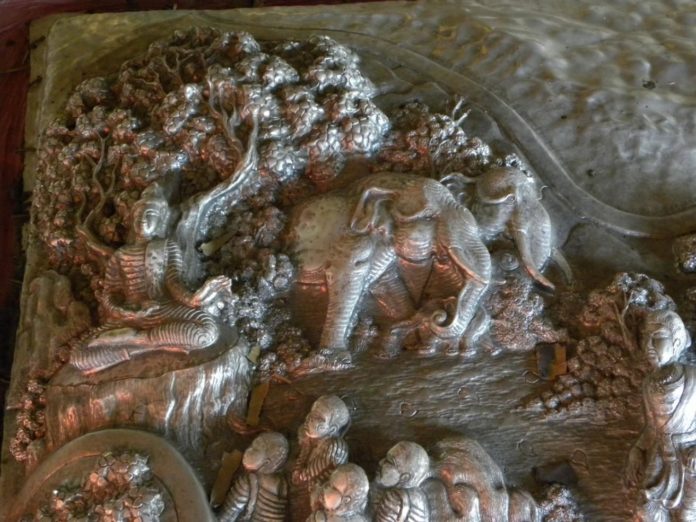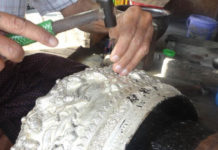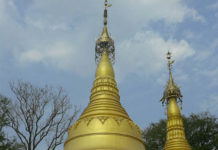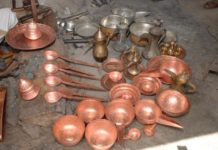Ban Wua Lai, Chiang Mai province, has long been a production base of silverware. The ancestors of the community were silversmiths who migrated from the Shan State to Chiang Mai during Chiang Mai’s revival (late eighteenth to early nineteenth centuries) and settled in the south of the Chiang Mai Gate. Many families today have continued the craft, making Ban Wua Lai known as the “Silver Road” and a famous One Tambon One Product (OTOP) village in Chiang Mai.
To make silverware, silver is melted in a crucible, which is placed in a forge called tao phao. While heating, saltpetre and borax are added to make silver soft and smooth. Then, the molten silver is poured in a clay mold and its surface is smoothened by a tool. The silver is left for five minutes and the mold is overturned to get the silver out. The silver is coated with sulphur and immersed in water, which will turn it green blue. The silver is put in tamarind water to clean it and especially wash out all the acid. It is polished with a brass brush. Then, it is shaped by beating before polishing for shininess.
The popular silverware from Chiang Mai is khan, or salung, (water bowl), which can be referred to with different names in accordance with their shape and function and often has high- relief design.






